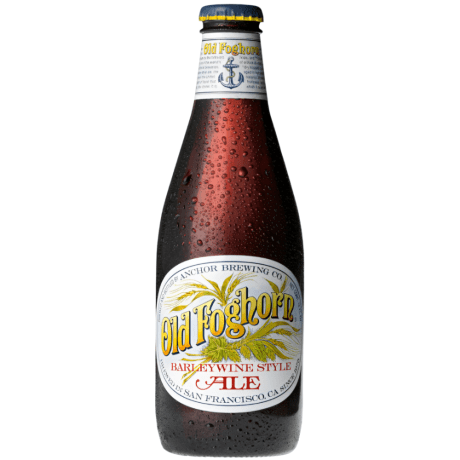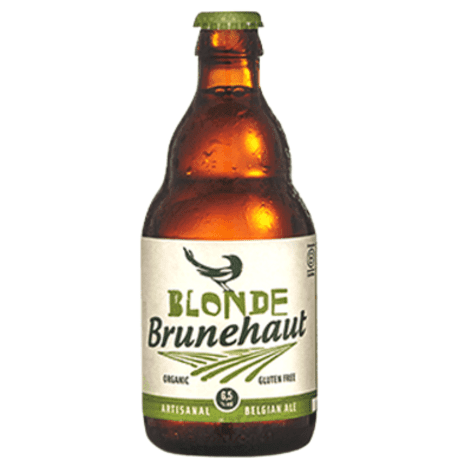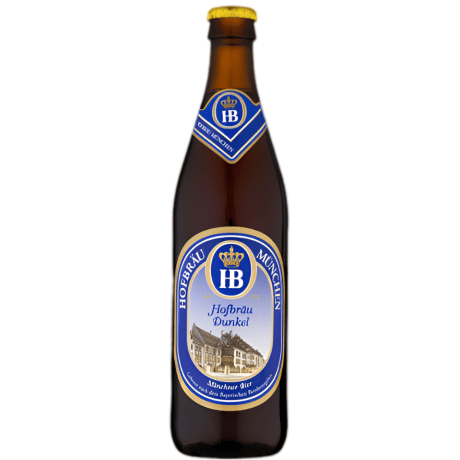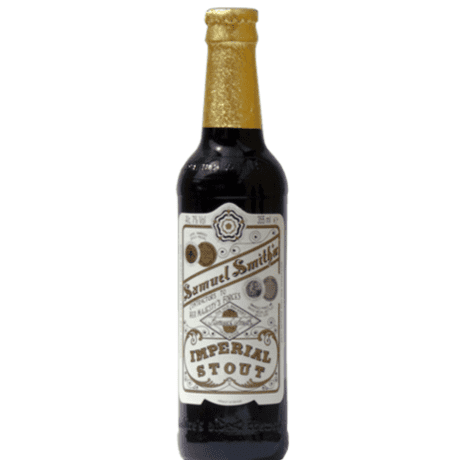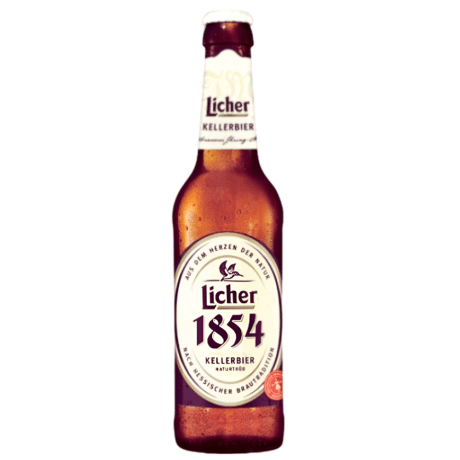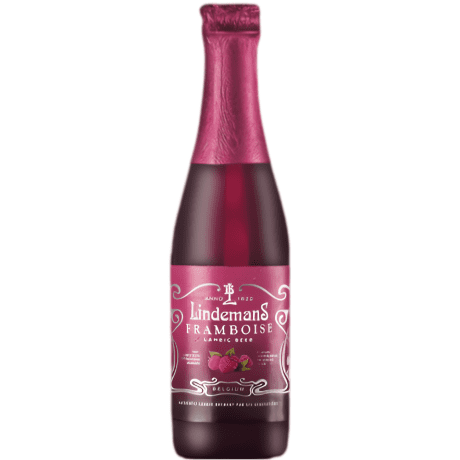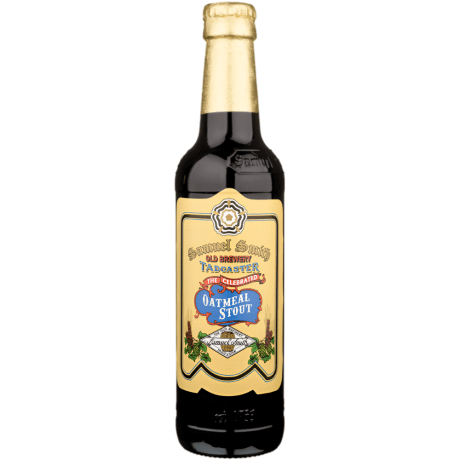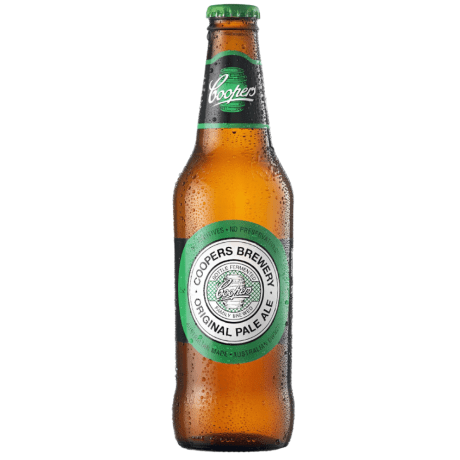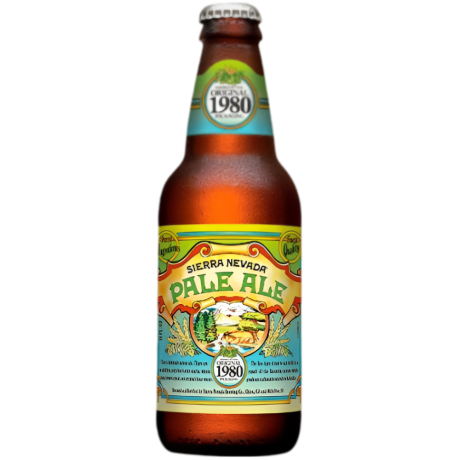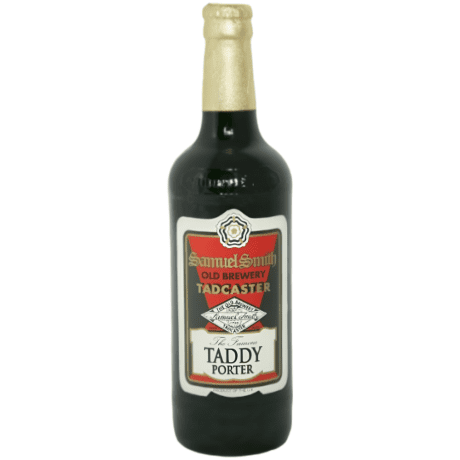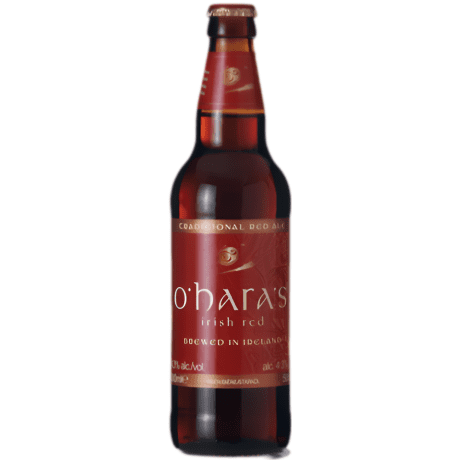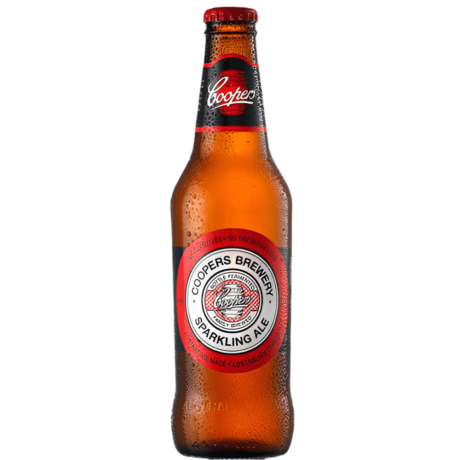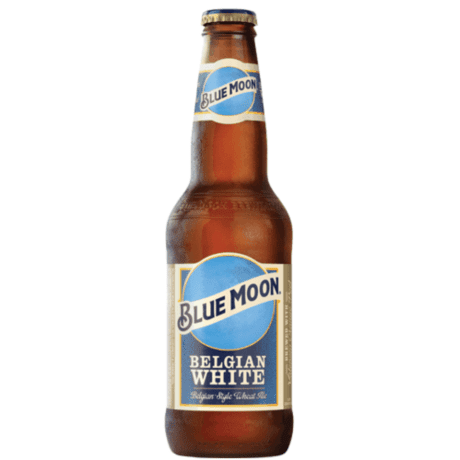American Barleywine
American Barleywine is a high-alcohol craft beer, characterised by its intensity and complexity. Often considered one of the strongest ales, this beer stands out for its robust flavour that combines sweet malt and pronounced bitterness, thanks to American hop varieties. Unlike its English counterpart, American Barleywine offers a hoppier profile, with citrus, resinous, and sometimes fruity notes. Furthermore, some beers of this style are barrel-aged, which enhances their complexity.
Style Characteristics
Aroma: The aroma of an American Barleywine is a blend of sweet malts and hops, which may present citrus, fruity, or resinous notes, with a slight alcoholic hint.
Flavour: On the palate, it’s a strong, malt-rich beer with moderate to aggressive bitterness. The hop flavour is prominent but always balanced by a malty base reminiscent of bread, caramel, or even toasted notes.
Appearance: Amber to copper in colour, with ruby highlights. Its head is moderate in volume and off-white to tan in colour.
Mouthfeel: Full-bodied with a velvety texture, ideal for sipping slowly. Carbonation is low to moderate, and the alcohol is noticeable but not harsh.
History
It originated in the US craft beer scene with Anchor Old Foghorn (1975), but it was Sierra Nevada Bigfoot (1983) that defined its identity with bold bitterness. Ironically, when a lab described its hop intensity as “excessive”, the response was clear: “Thank you”. Ideal for winter, this complex beer offers malty notes, caramel, and dried fruit, balanced by an intensely hoppy finish.
Why choose an American Barleywine?
This style is perfect for those seeking an intense and complex beer. Its high alcohol content and balance between sweet malts and hop bitterness make it ideal for special occasions or as part of a beer tasting. The combination of flavours in each sip offers a unique experience.
Recommended Beer: Anchor Old Foghorn
One of the first American Barleywines to reach the US market, Anchor Old Foghorn is a classic example of this style. With a rich malt base and noticeable bitterness, this beer presents a complexity that improves with ageing. The use of American hops like Cascade and Centennial provides resinous and citrus notes that pair perfectly with its robust, smooth body.
How to Enjoy It
Anchor Old Foghorn is best enjoyed in a tulip glass or snifter, at a cool temperature (around 10–12°C), to allow the aromas and flavours to fully express themselves. Perfect for pairing with grilled meats, mature cheeses, or desserts like apple pie.
Belgian Dark Strong Ale
The Belgian Dark Strong Ale is one of the jewels of the Belgian brewing tradition. Known for its complexity and potency, this beer is distinguished by its deep, fruity, malty profile, accompanied by spicy notes and a touch of alcohol that isn’t overwhelming, but quite the opposite: warm and pleasant. Ideal for lovers of robust beers with character, the Belgian Dark Strong Ale is perfect for special occasions or as part of a tasting where you seek a deep and multi-faceted experience.
Style Characteristics
Aroma: The first impression upon bringing it to the nose is an intense blend of rich malt, reminiscent of bread and dark caramel, accompanied by a deep fruity note. Predominant esters may include fruits like plums, figs, dates, and raisins. Additionally, spicy phenols add a subtle touch of black pepper or vanilla, while the alcohol is perceived gently, with a delicate floral or rose-like fragrance.
Flavour: On the palate, it presents a rich malt that unfolds complexly, balanced by a slight bitterness. Flavours of dark fruits and dark caramels combine with a subtle spicy touch. The finish is dry, but not bitter, leaving an aftertaste that invites further sipping.
Appearance: Its colour is a deep amber, with brown and reddish tones, making it visually appealing. The head is dense, persistent, and cream to light tan in colour.
Mouthfeel: Medium to full-bodied, with a creamy texture and moderate carbonation. The warmth of the alcohol is noticeable, providing a pleasant sensation without being aggressive.
History
The Belgian Dark Strong Ale is an iconic style born in Belgian abbeys before the Second World War. Westvleteren was a pioneer, followed by Chimay and Rochefort, who perfected the recipe after the conflict. Although other abbeys joined in the late 20th century, secular breweries had already been producing it since 1960. Its profile is complex and robust, with notes of caramel, dark fruits, and spices, driven by unique Belgian yeasts.
Why choose a Belgian Dark Strong Ale?
This style is ideal for those seeking a beer that combines strength and elegance. Its complexity and richness of flavours make each sip a unique experience, perfect to enjoy alone or paired with intense dishes. It’s a beer that improves with time, and fans of ageing beers will find it a wonderful option to cellar and discover how it evolves.
Recommended Beers:
Chimay Blue (Bleue)
This iconic Trappist beer is a perfect example of the style’s complexity and smoothness. With a rich malty base and notes of dark fruits like prunes and figs, Chimay Blue presents a delicate spicy touch that balances perfectly with its alcoholic warmth. Ideal for those seeking a full-bodied beer without losing the elegance of traditional Belgian styles.
Gulden Draak Classic
Another great representative of the Belgian Dark Strong Ale, with a robust flavour that blends sweetness and a slight acidity. Its complexity is reflected in its notes of ripe fruits and its characteristic caramelised touch. Full-bodied, it’s a beer that leaves a pleasant warming sensation, ideal for pairing with game dishes or mature cheeses.
Trappistes Rochefort 10
If you’re looking for a beer with outstanding alcoholic intensity and rich flavours, Rochefort 10 is an unbeatable choice. With its impressive malty profile and notes of dark fruit and spices, this beer is a classic that should not be missing from any Belgian beer lover’s selection. A Trappist beer characterised by its balance and its ability to improve over time.
How to Enjoy This Style
The Belgian Dark Strong Ale is best enjoyed in a tulip glass or goblet, at a temperature between 10–12°C to allow its aromas and flavours to fully develop. It’s the perfect beer to accompany roasted meats, mature cheeses, and dark chocolate desserts.
Fruit Beer
Fruit Beers are beers where fruits are incorporated during brewing, adding natural aromas and flavours without losing the beer’s essence. Unlike other fruity drinks, this style seeks harmony between the fruit nuances and the characteristics of the base style, without being overly sweet or artificial.
From cherries and raspberries to tropical fruits, the versatility of this style allows for a wide range of interpretations, resulting in refreshing, complex, and very attractive beers for those seeking a different sensory experience.
Style Characteristics
Aroma: Depends on the fruit used and the base style. Some fruits, like cherry or raspberry, stand out more intensely, while others may offer subtler nuances. Hop aroma is usually moderate so as not to overshadow the fruit notes.
Flavour: Balanced between the fruit and the beer. It should not be excessively sweet or reminiscent of fruit juice. Fruits contribute acidity, tannins, or a dry touch, depending on the type and fermentation.
Appearance: Varies according to the base style and the fruit used. Some impart vibrant hues like red, amber, or orange. The head may acquire slight tints of the fruit’s colour.
Mouthfeel: Generally light and refreshing, with a drier finish due to the fermentation of fruit sugars. Some may have a slight tannic body if the fruit used provides it.
Why choose a Fruit Beer?
This style is ideal for those seeking a beer with an aromatic and flavourful profile, without losing its craft essence. They are perfect for summer or as a different option within a tasting. Their refreshing character makes them an excellent alternative for pairing with desserts, soft cheeses, or spicy dishes.
Recommended Beers
Cherry Chouffe
This Belgian beer combines the intensity of a strong ale with the unmistakable flavour of cherries. Its malty base balances the fruit’s acidity, creating a complex beer with medium body and a smooth, spicy finish. Its deep red colour and pinkish head make it visually appealing, while its flavour is a harmonious blend of sweetness, acidity, and fruity notes.
Belzebuth Rouge
A high-alcohol Fruit Beer that incorporates red fruits in its brewing process. It presents an intense, bright colour, with an aroma reminiscent of strawberries and ripe cherries. Its flavour is fruity, with a subtle touch of spice and a dry finish, making it a sophisticated option for those seeking a fruit beer with character.
How to Enjoy a Fruit Beer
To best appreciate their nuances, it’s recommended to serve them in a chalice or tulip glass, at a temperature of 6–10°C. They are an excellent option to accompany chocolate desserts, fruit cakes, or even sweet and sour dishes.
Blonde Ale
Blonde Ale is a golden, light, and accessible beer style, ideal for those seeking a perfect balance between maltiness, freshness, and a light hop presence. Popular in both Belgium and the United States, this style stands out for its drinkability and food pairing versatility.
Style Characteristics
Aroma: Subtle malt notes with hints of bread, biscuit, or honey. May present light fruity and floral touches, depending on the yeast used.
Flavour: Smooth and well-balanced, with an initial malty sweetness that merges with moderate bitterness. Some versions may include light spicy or citrus touches.
Appearance: Golden yellow colour, bright and clear, with a white head showing good retention.
Mouthfeel: Light-medium body and medium-high carbonation, making it refreshing and easy to drink.
History
Blonde Ale is a modern style born during the craft beer revolution of the 1980s and 90s. Inspired by Belgian abbey beers and English ales, it was perfected in the US as an accessible alternative to industrial lagers. Smooth, balanced, and with a subtle touch of hops, this beer is ideal for those seeking complex flavours without sacrificing freshness. It is believed that the first Blonde Ale was brewed by Catamount in 1987, establishing itself as an excellent gateway into the world of craft beers.
Why choose a Blonde Ale?
Blonde Ale is perfect for those seeking a balanced beer, without aggressive or extreme flavours. Its accessible character makes it an excellent choice both for starting out in the world of craft beer and for enjoying on any occasion.
Recommended Beer: Brunehaut Blonde Bio Gluten-Free
For those wanting a Blonde Ale with a special touch, Brunehaut Blonde Bio Gluten-Free is the ideal choice. Brewed by the prestigious Brasserie de Brunehaut in Belgium, this beer offers all the character of this style, but with the advantage of being gluten-free and organic.
The aroma has elegant notes of white flowers and yeast, with a subtle malty background. Its flavour is balanced and refreshing, with a smooth malt and a spicy touch from the Belgian and German hops. It has a smooth and light texture, with a lingering head that enhances the sensory experience.
Furthermore, Brunehaut Blonde Bio Gluten-Free has won international awards, cementing its reputation as one of the best gluten-free beers on the market.
How to Enjoy It to the Fullest
To appreciate all its qualities, serve it between 4°C and 7°C in a tulip-style glass, which will enhance its aromas. Its versatile profile makes it perfect for pairing with vegetarian dishes, fresh salads, or mild cheeses.
Christmas Beers
Christmas Beers are a brewing tradition that captures the essence of the winter season. With spiced flavours, robust body, and high alcohol content, these beers are designed to provide warmth during the cold months. They are often brewed with typical Christmas ingredients, such as cinnamon, ginger, cloves, nutmeg, honey, or dried fruits, giving them a complex and festive profile.
Style Characteristics
Aroma: Malty and spicy notes with a fruity touch. Hints of caramel, honey, dried fruits, and a slight alcoholic warmth are perceived.
Flavour: Rich and balanced, with malty sweetness complemented by spices reminiscent of Christmas desserts. Some versions include notes of chocolate, dried fruits, or citrus peel.
Appearance: Colour ranging from deep amber to dark brown, with a persistent head of ivory or tan hue.
Mouthfeel: Medium to full body, with a silky texture and a slight alcoholic warmth. Moderate carbonation enhances the flavours without overshadowing them.
Why choose a Christmas Beer?
Christmas Beers are perfect for those seeking a comforting and nuanced beer experience. Their spiced profile and malty character make them an ideal choice for pairing with festive dishes, such as roasted meats, mature cheeses, and desserts with dried fruits or chocolate.
How to Enjoy It
To appreciate all its nuances, serve it in a chalice or snifter glass, at a temperature of 10–12°C. Its aroma and flavour will intensify as it warms up, offering a unique sensory experience.
Doppelbock
Doppelbock is one of Germany’s most emblematic beers. It is a strong, rich, and malty lager, originally created by Bavarian monks in the 18th century as “liquid bread” to consume during Lenten fasts. Over time, this beer evolved to become a benchmark in the brewing world, with dark and pale versions, but always with an intense character and unmistakable depth of flavour. This style is perfect for those seeking intense and complex beers with an ideal balance between sweetness and potency.
Style Characteristics
Aroma: Intense notes of toasted malt, caramel, and dried fruits in the dark versions, while pale versions stand out for their bread and cereal character with a subtle touch of hops.
Flavour: Malty sweetness with hints of caramel, chocolate, and toasted bread. There might be a slight bitterness, but malt is the main star.
Appearance: From dark amber to deep brown with ruby highlights in dark versions; intense gold in pale ones. Creamy and persistent head.
Mouthfeel: Medium to full body, velvety texture, and a slight alcoholic warmth that is never aggressive.
Recommended Beers
Ayinger Celebrator
If you are looking for a classic example of the Doppelbock style, Ayinger Celebrator is an essential choice. Brewed by the Bavarian brewery Brauerei Ayinger, this beer has won multiple awards for its exceptional quality.
Tasting notes: Presents a deep malty profile, with aromas of caramel, dried fruits, and a light touch of chocolate. On the palate, its smooth and velvety texture stands out, with a warm and slightly sweet finish.
Pairing: Perfect for accompanying stews, cured meats, mature cheeses, or chocolate desserts, enhancing each of their flavours. We recommend drinking it between 8 and 10°C.
Alcohol content: 6.7% ABV.
Samichlaus Classic
For those seeking an even more intense experience, Samichlaus Classic from the Austrian brewery Brauerei Schloss Eggenberg is one of the strongest Doppelbocks in the world, with an impressive 14% ABV.
Tasting notes: Deep reddish-brown colour, with a creamy head. Its aroma evokes dark fruits like plums and raisins, accompanied by caramel, toffee, and a floral hop touch. On the palate, its robust body offers intense flavours of toasted malts, liquorice, and dried fruits, with a warm and lasting finish.
Pairing: Ideal for sipping slowly at a temperature between 12 and 14°C, like a vintage wine. Pairs perfectly with mature cheeses, desserts, or fine chocolates.
Dubbel
The Dubbel is an abbey-style beer originating from Belgium, known for its deep copper colour, rich malty complexity, and fruity notes. It’s a beer with history that today remains a favourite choice for those seeking beers with body, flavour, and a high fermentation that enhances its spicy nuances.
Style Characteristics
Aroma: Presents a malty profile with notes of caramel, brown sugar, and a toasted touch. Fruity esters reminiscent of prunes, raisins, and ripe banana are perceived. Some examples may offer subtle spicy notes of clove or pepper from the yeast.
Flavour: Balance between malty sweetness and a moderately dry finish. Flavours of dark fruits, caramel, and a slight bitterness complement the experience without dominating.
Appearance: Colour ranging from dark amber to coppery brown, with reddish highlights. Dense, creamy, and persistent head, beige in hue.
Mouthfeel: Medium to medium-full body, with moderate to high carbonation that highlights its spicy and fruity character. May present a slight alcoholic warmth.
History
The Dubbel style has its roots in the Trappist abbey of Westmalle, Belgium, where it was first produced in 1856. Originally, this beer was a stronger version of a brown beer, with a higher alcohol content than traditional abbey beers. In 1926, the recipe was adjusted to make it even more robust. After the Second World War, the style became popular, and the name “Dubbel” was used commercially. Today, Dubbel-style beers range between 6% and 8% ABV, with a thick body, mild bitterness, and a fruity flavour with hints of cereal, representing the Belgian tradition of intense and complex beers.
Why choose a Dubbel?
If you are a lover of Belgian beers and enjoy malty and complex flavours, the Dubbel is an excellent choice. Its balance between sweetness, spices, and dark fruits makes it ideal for both tastings and accompanying a good meal.
Recommended Beers
Ename Dubbel
From Oudenaarde, Belgium, Ename Dubbel offers an authentic abbey experience with its reddish-brown hue and creamy head. On the palate, a balance unfolds between caramel, toasted malt, and a subtle hop bitterness, with notes of dark chocolate and dried fruits. Its bottle conditioning and traditional brewing make it an ideal choice for pairing with stews, red meats, and mature cheeses.
Engelszell Benno
Hailing from the Trappist abbey of Stift Engelszell in Austria, Engelszell Benno is a Dubbel with its own twist. With 6.9% alcohol, it stands out for its toasted colour and aroma of malt, honey, and spicy hops. Its flavour offers a harmonious blend of sweetness, bitterness, and a silky finish. Perfect for pairing with creamy cheeses, roasted meats, and fruit desserts.
How to Enjoy a Dubbel
To appreciate all its nuances, serve the Dubbel in a chalice-style glass at a temperature of 8–12°C. Its carbonation will help release the complex aromas, while its body and sweetness will be enhanced by the warmth of the glass.
Munich Dunkel
The Munich Dunkel is a dark lager beer, originating from Bavaria, Germany, that stands out for its deep malty character and smoothness on the palate. This style, created in Munich, has endured over time thanks to its balance between toasted notes, a slight sweetness, and moderate bitterness.
Unlike other dark beers like Schwarzbier, Munich Dunkel does not present burnt or excessively bitter flavours. Its profile focuses on the malt, with nuances of toasted bread, caramel, and cocoa, creating a complex yet accessible experience.
Style Characteristics
Aroma: Predominant notes of toasted malt, freshly baked bread, and subtle hints of chocolate and caramel. There may be a slight spicy or herbal aroma from the hops.
Flavour: Moderate sweetness with nuances of bread, nuts, and hints of cocoa. Bitterness is low to medium, always letting the malt take centre stage. Smooth and slightly dry finish.
Appearance: Dark amber to deep brown colour, with reddish highlights. Creamy head of beige hue.
Mouthfeel: Medium to medium-full body, with a silky texture and moderate carbonation. Not heavy or cloying.
History
Its roots trace back to the XII century, when Benedictine monks began brewing beers in Munich. Its evolution was influenced by two key laws: the Purity Law of 1516, which restricted beer ingredients, and a law from 1553 regulating annual production. These regulations, along with the climate and lager fermentation technology, contributed to the creation of this distinctive style. In the 19th century, Gabriel Sedlmayr II perfected the recipe through an innovative kilning process, eliminating smoky characteristics and leaving a cleaner, maltier, and more flavourful beer.
Why choose a Munich Dunkel?
If you like dark but balanced beers, Munich Dunkel is an ideal option. It’s perfect for those seeking a beer with depth of flavour, without excessive roasted notes or cloying sweetness. Its smoothness and malty profile make it a great food pairing companion.
Recommended Beer: Hofbräu München HB Dunkel
To truly enjoy this style, we recommend Hofbräu München HB Dunkel, a beer with centuries of tradition brewed in Munich. This German beer stands out for its silky body, its balance between sweetness and bitterness, and its notes of toasted malt, caramel, and a light touch of cocoa. It pairs perfectly with red meats, mature cheeses, and chocolate-based desserts. We recommend serving it between 8 and 10°C, in a Seidel or Pokal style glass to highlight its aromas and head.
Flanders Red Ale
The Flanders Red Ale is a unique Belgian beer style, known for its complexity and its characteristic balance between sweetness, acidity, and fruity notes. Originating from the West Flanders region, this beer is often referred to as the “Burgundy of Belgium” due to its flavour profile reminiscent of aged red wines. Its mixed fermentation process and maturation in oak barrels give it an unparalleled depth.
Style Characteristics
Aroma: Dominated by red and dark fruits like cherry, plum, and currant, with subtle hints of vanilla and wood. Acidity is noticeable but well-integrated.
Flavour: Balance between vibrant acidity and light toasted malt. Notes of macerated fruits and a subtle balsamic vinegar character add complexity.
Appearance: Deep red to reddish-brown colour, with good clarity and a head ranging from off-white to light tan.
Mouthfeel: Medium body with a velvety texture. Moderate carbonation highlights its freshness, while oak tannins contribute a slight astringency.
History
Its history dates back to the XII century in Brussels, where wheat and barley beers were already being made. Over the centuries, the blending of mature and young beers was adopted from English traditions, perfected by the Rodenbach brewery, founded in 1821. This style is characterised by its maturation in wooden vats (foeders), which imparts a unique, acidic, and fruity flavour.
Why choose a Flanders Red Ale?
If you are a lover of beers with character, Flanders Red Ale is an excellent option. Its acidic and fruity profile makes it a fascinating alternative to red wines, ideal for pairing with mature cheeses, roasted meats, or desserts like fruit tart.
Recommended Beer: Bourgogne des Flandres
If you’re looking for an authentic Flanders Red Ale, try the exceptional Bourgogne des Flandres, available at Cervezas San Galo. This craft beer, originating from Bruges, captures the essence of the style with its mixed fermentation and perfect balance between sweetness, acidity, and woody notes. Aged in oak barrels, which gives it an elegant and deep character. It has a harmonious flavour contrast between fruity notes and a slightly vinous background.
Each sip transports you to the cobbled streets of Bruges, offering an incomparable sensory journey.
Enjoy Bourgogne des Flandres in a chalice-style glass at a temperature of 10–12°C and discover why this style has captivated the most demanding palates.
Imperial Stout
Imperial Stout is a beer style originating from England, famous for its potency, depth of flavours, and dense body. Its history dates back to the 18th century, when British breweries brewed more robust stouts to withstand long journeys to Russia, where they became favourites of the imperial court. Over time, the style evolved, leading to modern interpretations in the UK, the United States, and other brewing regions.
Style Characteristics
Aroma: Complex and intense, with roasted notes reminiscent of dark chocolate, coffee, and caramel, accompanied by a subtle fruity background and a liqueur-like touch.
Flavour: Deep and balanced, with nuances of roasted malt, cocoa, and dried fruits, complemented by moderate to high bitterness. In some aged versions, notes of wood, vanilla, or liqueur may appear.
Appearance: Opaque black colour, with a dense head of dark brown or tan hues. Its high viscosity reflects its robustness.
Mouthfeel: Full and silky body, with moderate carbonation. The alcohol is noticeable but well-integrated, providing warmth without being aggressive.
Why choose an Imperial Stout?
If you are looking for a beer with great presence, flavour intensity, and a velvety texture, Imperial Stout is an ideal option. Its balance between malty sweetness and bitterness makes it perfect for sipping slowly, appreciating every nuance with each sip. Additionally, it is an excellent style for ageing, as it develops new layers of complexity over time.
Recommended Beer: Samuel Smith Imperial Stout
Among the best interpretations of the style, Samuel Smith Imperial Stout stands out, a British classic brewed in the historic Old Brewery in Yorkshire. This beer is fermented in traditional Yorkshire Squares, which gives it a smooth texture and unique complexity.
It has a robust and creamy body, with flavours of dark chocolate, roasted coffee, and dried fruits, complemented by a slight bitterness from English hops like Fuggles and Golding. With an alcohol content of 7% ABV, it has a perfect balance to provide warmth without being overwhelming.
Ideal for pairing with spiced meats, blue cheeses, and dark chocolate desserts, enhancing their intensity and depth of flavours. To appreciate its full potential, Samuel Smith Imperial Stout should be served in a tulip or snifter glass, at a temperature between 10°C and 12°C. This will allow the aromas and flavours to express themselves fully, offering an unparalleled sensory experience.
IPA
India Pale Ale, better known as IPA, is a highly hopped beer style, characterised by its intense bitterness, citrus and fruity aromas, and balanced body. Its history dates back to the 18th century, when British brewers began brewing beers with a higher hop load and higher alcohol content to preserve them during the long voyages to India. This style has evolved over time and is currently one of the most popular within the craft beer movement.
Style Characteristics
Aroma: Predominantly fruity and resinous aromas from the hops, with notes of citrus, pine, tropical fruits, and flowers. Some versions also present spicy and herbal nuances.
Flavour: Bitterness is the star, balanced with a malty base that can contribute caramelised or slightly toasted notes. Fruity profiles vary depending on the hops used, highlighting flavours of grapefruit, passion fruit, mango, and pine.
Appearance: Colour ranging from golden to coppery amber. The head is usually persistent and creamy.
Mouthfeel: Medium to full body, with moderate carbonation. Alcohol presence can vary, but is generally not overwhelming.
Why choose an IPA?
If you are looking for a beer with an explosion of aromas and unmistakable bitterness, IPA is the ideal choice. Its versatility makes it perfect for both craft beer experts and those wishing to explore new intense flavours.
Recommended Beers
Duvel Tripel Hop Cashmere
A Belgian interpretation of the IPA with extra intensity. Its long brewing process (90 days) gives it a balance between malty sweetness and refined bitterness. It stands out for its fruity, spicy notes and a smoothness that hides its high alcohol content.
We recommend pairing it with grilled meats, mature cheeses, and spicy dishes.
Vedett Extra Ordinary IPA
Brewed with four American hops, this Belgian IPA is characterised by its dry-hopping process, which enhances its citrus and tropical aromas. Its balanced bitterness and light body make it very drinkable, ideal for both experts and those new to the world of IPAs.
Try it with bacon burgers, roasted ribs, and semi-mature cheeses.
Sloeber IPA
A Belgian IPA with a fresh and fruity character, with predominant notes of grapefruit and apricot. Unlike other IPAs with more aggressive bitterness, Sloeber IPA offers a harmonious balance between sweetness and bitterness, making it an accessible option for those seeking a hoppy experience without being extreme.
Pair it with creamy risottos, hunting meats, and caramel desserts.
American IPA
American IPA (India Pale Ale) is one of the most popular and emblematic craft beers in the world. It is characterised by its marked bitterness, intense hop aromas, and a dry finish that makes it extremely refreshing. Unlike English IPAs, this American version stands out with citrus, resinous, and tropical notes thanks to the use of American and New World hops. Its balance between malt and hops varies depending on the brewer’s interpretation, but it always maintains a hop-forward profile.
Style Characteristics
Aroma: Intensely hoppy, with notes that can recall citrus, tropical fruits, pine, or resin. The malty background is light, allowing the hops to be the star.
Flavour: Pronounced bitterness, balanced by a subtle malty presence that can contribute light touches of caramel or bread. The aftertaste is dry and hoppy.
Appearance: Medium gold to coppery amber colour, with a persistent white head and slight haze in some cases.
Mouthfeel: Light-medium to medium body, with moderate-high carbonation making it refreshing. May present a slight alcoholic warmth.
History
Its origin dates back to 1975, when Anchor Liberty Ale made history by using whole Cascade hops, marking a starting point for the modern style. Although some earlier examples, like Ballantine’s IPA, already used intense hops, it was with Liberty Ale that the style began to take shape. Over time, American IPA has experienced growing popularity, standing out for its citrus and floral notes that differentiate it from other versions. Today, it remains a favourite within craft beer.
Why choose an American IPA?
If you are a hop lover and enjoy intense flavours, American IPA is the perfect choice. Its versatility allows for finding fruitier, drier, or more resinous versions, depending on each brewer’s interpretation. It is an ideal beer for pairing with burgers, spicy tacos, hot wings, or strong cheeses, as its bitterness and effervescence balance fat and spice.
Recommended Beers
Brouwerij ‘t IJ IPA
From Amsterdam comes Brouwerij ‘t IJ IPA, a Dutch IPA with authentic hoppy character. Its aromatic profile, dominated by Cascade, Citra, and Mosaic hops, offers a bouquet of grapefruit, flowers, and a refreshing citrus touch. On the palate, its subtle malty base balances its medium-high bitterness, leaving a fruity sensation with a dry and persistent finish. At 7% ABV, this IPA is an excellent option for those seeking an intense and well-balanced beer.
It has citrus and floral aromas with a resinous background. Fruity flavour with a dry finish and medium-high bitterness. Ideal with grilled meats, mature cheeses and spicy dishes.
Brewdog Punk IPA
Brewdog’s Punk IPA is one of the most iconic beers of the craft beer movement. From Scotland, this IPA pushes the boundaries with an explosion of tropical fruits, grapefruit, pineapple, and lychee, accompanied by firm bitterness. Brewed with Ahtanum, Amarillo, Cascade, Chinook, Nelson Sauvin, and Simcoe hops, its profile is vibrant and complex, with a perfect balance between sweetness and bitterness.
It has intense aromas of tropical fruit and citrus, with a background of resin and caramel. On the palate, it combines freshness, bitterness and a medium body that makes it very drinkable. Perfect with gourmet burgers, fish tacos or spicy Asian dishes.
Kellerbier
Kellerbier is an unfiltered and unpasteurised lager, originating from Germany. Its name, meaning “cellar beer,” refers to its traditional method of cold maturation inside cellars or caves, where it develops a fresh and rustic character. This beer is distinguished by its silky texture and malty flavour, with a perfect balance between notes of bread, caramel, and a slight hop bitterness.
Style Characteristics
Aroma: Malt notes with hints of bread and caramel, accompanied by a subtle touch of spicy hops. In paler versions, the hops may be more pronounced.
Flavour: Smooth malts predominate with a slight sweetness balanced by moderate bitterness. Some versions may have a more robust profile and a slightly dry finish.
Appearance: Colour varying from golden to amber, with a natural haze due to suspended yeast. Its head is abundant and creamy.
Mouthfeel: Medium body and velvety texture. Carbonation is usually softer than in other lagers, making it extremely drinkable.
Why choose a Kellerbier?
If you are looking for an authentic beer with history and craft character, Kellerbier is an excellent option. Its freshness and balance make it an ideal alternative for those who enjoy lagers with more depth of flavour. Additionally, it is perfect for pairing with cured meats, mild cheeses, or traditional German dishes like pretzels and schnitzel.
Recommended Beer: Licher 1854 Kellerbier
To enjoy an authentic Kellerbier, we recommend Licher 1854 Kellerbier, brewed in the historic town of Lich. This beer captures the essence of German tradition with its golden and silky colour, smooth body, and malty notes with a spicy hop touch. Its cellar fermentation process gives it a unique depth of flavours, ideal for those seeking a genuine beer experience.
How to Enjoy It to the Fullest
Serve it in a beer glass or wide glass at 8–10°C to better appreciate its aromas. Pair it with Bavarian dishes, roasted meats, or simply enjoy it with good conversation.
Kölsch
Kölsch is a unique beer style, originating from Cologne (Germany), that combines the best of ales and lagers. Its fermentation is high, like an ale, but its cold maturation recalls lagers, resulting in a clean, light, and refreshing beer. Its subtle flavour and perfect balance make it an ideal choice for those seeking an easy-drinking beer, but with personality.
Style Characteristics
Aroma: Soft and delicate, with subtle malt notes and a light fruity touch (apple or pear). May present floral or spicy nuances from the hops.
Flavour: Balanced between a soft maltiness, moderate bitterness, and slight fruitiness. Its finish is dry and refreshing, without residual sweetness.
Appearance: Light golden colour, bright, with a fine white head of moderate retention.
Mouthfeel: Light and smooth, with medium-high carbonation. It is a very drinkable beer, without harshness or excessive heaviness.
History
The Kölsch style has its roots in the brewing tradition of Cologne, dating back to the Middle Ages. However, the modern version of this style was born in the late 19th century, as an alternative to pale lager beers. It was officially recognised in 1918, although its popularity increased in the 1960s. Kölsch has been protected by the Kölsch Konvention since 1986, restricting its production to breweries in and around Cologne. Today, it remains an emblem of the city, with annual consumption close to 3 million hectolitres.
Why choose a Kölsch?
If you are looking for a light beer but with character, Kölsch is perfect for you. Its clean and refreshing profile makes it ideal for any occasion, from a hot day to a gathering with friends. Additionally, it is an excellent alternative for those who enjoy lager-type beers but want to try something different.
Recommended Beer: Früh Kölsch
Among the best examples of the style, Früh Kölsch stands out, a beer brewed in the traditional Früh brewery, in the heart of Cologne. With over a century of history, Früh Kölsch stays true to the original recipe, offering a golden, crystal-clear beer with a creamy head.
How to Enjoy It to the Fullest
Serve it at a temperature between 4 and 7 °C to highlight its freshness and in a Stange glass, the classic tall, narrow glass from Cologne, which enhances its aromas and maintains its carbonation.
Its lightness and freshness pair well with light dishes such as salads, fish, seafood, or mild cheeses. It is also a great option to accompany traditional German food like bratwurst or schnitzel.
Lager
Lager is, undoubtedly, the most popular beer style in the world. Smooth, refreshing, and easy to drink, these beers are characterised by their low-temperature fermentation and extended maturation, which gives them a clean and well-balanced profile. Their versatility makes them the ideal choice both for those seeking a light and accessible beer and for those wishing to explore more complex nuances within this broad style.
Unlike Ale beers, which ferment at higher temperatures and develop fruitier profiles, Lagers stand out for their freshness and clarity of flavours. Within this style, we find varieties ranging from the mild Pale Lager and Pilsner to the malty Bock and the dark Schwarzbier.
Style Characteristics
Aroma: Subtle malt notes predominate with floral or herbal touches from the hops, depending on the sub-style. Some more complex Lagers may offer spicy or slightly fruity nuances.
Flavour: Balanced and clean, with a malt base that can recall bread, biscuits, or light caramel. The hop presence varies according to the sub-style, from the delicate and refreshing flavours of a Pale Lager to the more marked bitterness of a Pilsner.
Appearance: Generally light golden and bright, although some sub-styles can range from amber to deep black. The head is usually white and persistent.
Mouthfeel: Light to medium body, with moderate to high carbonation that reinforces its freshness. The finish is dry and clean, making them incredibly refreshing.
Why choose a Lager?
If you are looking for an easy-drinking beer with a clean and balanced flavour, Lager is the perfect option. Its wide variety of sub-styles allows you to enjoy everything from light and smooth beers to options with more character and complexity. Additionally, its food pairing versatility makes it an excellent companion for a great diversity of dishes.
Lager Sub-styles
Within the world of Lagers, there are several sub-styles characterised by slight variations in their brewing process and the ingredients used. Among the most common are:
Pale Lager: This is the most popular and widely recognised sub-style. Light beer, pale golden in colour, with a clean flavour and slight bitterness. Famous examples include Modelo Especial.
Euro Pale Lager: This sub-style is similar to Pale Lager but with a touch more bitterness and hops. A prominent example is Peroni Nastro Azzurro.
Dark Lager: With a darker colour, this sub-style has more intense and malty flavours, often with hints of caramel or toasted bread.
Bock: This is a fuller-bodied Lager, generally stronger and with sweeter, maltier flavours.
Recommended Beers
Modelo Especial
One of Mexico‘s best-known Lagers, Modelo Especial is a Pale Lager that stands out for its perfect balance between malt and hops. This refreshing, light-bodied beer is ideal for any time of day. Its clean flavour and lively carbonation make it an excellent choice if you’re looking for an easy-drinking beer with character.
Ideal for: Enjoying on a warm afternoon or accompanying light dishes, like tacos or salads.
Peroni Nastro Azzurro
Peroni Nastro Azzurro is a high-end Italian Euro Pale Lager, perfect for those seeking a premium Lager beer. Its subtle bitterness and more prominent hop profile give it a distinguishing complexity. With a touch of freshness and notes of malt and cereals, this beer offers a unique experience for lovers of elegant and refined beers.
Ideal for: Pairing with Italian dishes like pizza, focaccia, or pasta with light sauces.
Guinness Hop House 13 Lager
Although known for its Stouts, the Irish brewery Guinness also offers an excellent Lager. Hop House 13 Lager is characterised by its medium body and its fruity and floral profile, with notes of apricot and peach that make it more complex than other Lagers. If you’re looking for a Lager with more character, this is an ideal option.
Ideal for: Enjoying with grilled meats, mature cheese platters, or more robust salads.
How to Enjoy a Lager to the Fullest
To appreciate all its qualities, it is best to serve a Lager cold (between 3 and 7 °C) in a glass or cup that allows its head to be preserved and its aromas highlighted. They are perfect for pairing with light foods such as seafood, salads, pizzas or spicy dishes, enhancing their flavours without overwhelming the palate.
Lambic
Lambic is a unique beer style in the world, originating from the Pajottenland region of Belgium. It is characterised by its spontaneous fermentation, a process where yeasts and bacteria present in the environment initiate fermentation without the need for added yeasts. This gives it a complex and wild profile, with pronounced acidity and fruity or funky notes that evolve over time.
Style Characteristics
Aroma: Acidic and fruity notes with nuances of citrus, apple, and rhubarb. With ageing, earthy and hay-like touches may appear.
Flavour: Balance between acidity and fruity sweetness. May present nuances of bread, honey, or wheat, with no perceptible bitterness.
Appearance: Hues from pale yellow to intense gold, with a white head and low retention. Young versions can be cloudy, while aged ones are clearer.
Mouthfeel: Light to medium body, with a lip-puckering acidity and carbonation varying from low to moderate.
History
The Lambic style is a process dating back to the Roman Empire, when beers were brewed similarly. Unlike conventional beers, Lambics are fermented thanks to wild yeasts and bacteria present in the environment. This style has remained true to its roots over the centuries, even adapting to create variants like Gueuze and fruit Lambics. Although traditional Lambics almost disappeared due to wars and industrialisation, they are currently experiencing a resurgence, preserving their Belgian authenticity.
Why choose a Lambic?
This style is ideal for those seeking a complex beer with history. Its natural fermentation and barrel ageing give it an unparalleled character, with each batch showing unique nuances.
Recommended Beer: Lindemans Framboise
If you want to try a Lambic with a fruity touch, Lindemans Framboise is an excellent option. This Belgian beer combines young Lambic with 30% raspberry juice, giving it an intense pink colour and a profile that is both sweet and acidic. Its aroma highlights the freshness of raspberry and subtle caramel notes, while its flavour is balanced and refreshing, with mild acidity and a dry finish.
How to Enjoy It
To fully appreciate its nuances, serve Lindemans Framboise in a chalice-style glass at a temperature of 6–8°C. Its versatility makes it perfect for pairing with chocolate desserts, salads with berries, or creamy cheeses. It can also be used in cocktails or as a base for innovative culinary recipes.
Oatmeal Stout
Oatmeal Stout is a variant of the stout family, characterised by its velvety texture and balanced flavour between malt sweetness and roasted grain notes. The addition of oats to the recipe gives it a silkier body and creamier mouthfeel than other stouts, making it a perfect option for those seeking a dark beer that is accessible and easy to drink.
Although this style emerged in the early 20th century in England as a “nutritious” beer, its popularity solidified with the rise of craft beer. Today, Oatmeal Stout is found in both British and American versions, the latter having a drier, hoppier profile.
Style Characteristics
Aroma: Notes of roasted coffee and milk chocolate, accompanied by a light malty sweetness and, in some cases, a fruity touch.
Flavour: Balance between medium hop bitterness and malt sweetness, with a finish ranging from semi-dry to semi-sweet. Nuances of nuts and a subtle roasted acidity may appear.
Appearance: Dark brown to deep black colour, with a dense, creamy head of light brown or beige hues.
Mouthfeel: Medium to full body, with a smooth and silky texture thanks to the oats. Medium to medium-high carbonation.
Recommended Beer: Samuel Smith Oatmeal Stout
If you are looking for an Oatmeal Stout with history, quality, and exceptional flavour, Samuel Smith Oatmeal Stout is an unbeatable choice.
Brewed in the historic Samuel Smith Old Brewery in Tadcaster, England, this beer is a tribute to British brewing tradition. Its recipe incorporates pure water from a centuries-old well, select malts, and an iconic yeast strain used for generations.
What makes Samuel Smith Oatmeal Stout unique is its fermentation in traditional Yorkshire Squares, stone tanks that impart unparalleled smoothness. Its profile combines notes of milk chocolate, roasted coffee, and a hint of nuts, all wrapped in a silky texture and persistent head.
How to Enjoy It to the Fullest
Drink it at 10–12°C, allowing its aromas and flavours to fully express themselves, and in an English pint or snifter glass, to enhance its body and creaminess. It pairs wonderfully with chocolate desserts, blue cheeses, or smoked dishes.
Pale Ale
Pale Ale is a highly significant beer style in global brewing history. With a balance between malt sweetness and hop bitterness, it is a versatile option that has earned a special place in brewers’ hearts.
History
This style was born in England during the Industrial Revolution, when technological advancements allowed for more precise malt kilning, resulting in lighter and more balanced beers. The region of Burton-on-Trent became the epicentre of this revolution, thanks to its sulphate-rich water, which enhanced hop flavours and defined the profile of British Pale Ale.
Over time, this style evolved and adapted in different countries. In the United States, for example, brewers incorporated local hops, giving rise to the American Pale Ale (APA), characterised by greater bitterness and citrus or resinous aromas.
Style Characteristics
Aroma: Depending on the variant, it can present malty, caramelly, citrus, floral, or resinous notes.
Flavour: Balance between malt sweetness and hop bitterness, with a dry and refreshing finish.
Appearance: Golden to amber colour, with a white and persistent head.
Mouthfeel: Medium body, moderate carbonation, and bitterness ranging from mild to pronounced depending on the style interpretation.
Recommended Beer: Coopers Original Pale Ale
If you are looking for a Pale Ale with history and character, Coopers Original Pale Ale is an excellent choice. This Australian beer, brewed by the Cooper family since 1862, maintains its traditional bottle conditioning method, which gives it natural carbonation and a distinctive flavour profile.
Its aroma has herbal and woody overtones with a subtle hint of biscuit. It is light and refreshing, with a moderate bitterness and a sparkling texture and a light golden colour, slightly cloudy, with a dense and persistent head.
Coopers Original Pale Ale is versatile and pairs perfectly with semi-mature cow’s milk cheeses, highlighting their creaminess; grilled meats, such as pork ribs or roast chicken; and spicy pasta dishes, like penne arrabbiata or Asian noodles with ginger sauce.
American Pale Ale
American Pale Ale is an iconic style within the world of craft beer, standing out for its balance between malts and aromatic hops. Inspired by traditional English Pale Ales, but with an American twist, this style is characterised by moderate to high bitterness and fresh, vibrant notes contributed by New World hops. Its versatility and balanced flavour have made it one of the most popular beers within the craft beer movement.
Style Characteristics
Aroma: Dominated by hops, with nuances ranging from citrus and floral to resinous and spicy. The malt presence is subtle, contributing light touches of bread, biscuit, or caramel.
Flavour: A perfect balance between hop bitterness and malt sweetness. Fruity, herbal, and pine notes are perceived, with a dry and refreshing finish.
Appearance: Pale golden to amber colour, with a white and persistent head.
Mouthfeel: Light-medium body and moderate to high carbonation, making it very drinkable and refreshing.
Why choose an American Pale Ale?
If you like aromatic beers but not as intense as an IPA, the APA is an excellent option. Its bitterness is moderate, but it still offers a vibrant hoppy experience. It is a very versatile beer for pairing and enjoying on any occasion.
Recommended Beer: Sierra Nevada Pale Ale
When talking about American Pale Ales, we cannot fail to mention the legendary Sierra Nevada Pale Ale. This beer marked the beginning of the craft revolution in the United States and remains an undisputed benchmark of the style.
Sierra Nevada Pale Ale presents an intensely hoppy aroma, highlighting floral, herbal, and citrus notes from the Cascade hop. On the palate, it offers a harmonious balance between malt and hops, revealing nuances of pine, citrus, and a subtle sweetness contributed by the malt. Its appearance is characterised by an orange-amber colour crowned by a persistent white head. With a bitterness of 37 IBUs and an alcohol content of 5.6% ABV, it is a distinctive and appreciated beer.
How to Enjoy It to the Fullest
To appreciate all its complexity, serve it in a pint glass at a temperature between 7 and 10 °C. Its freshness and moderate bitterness make it ideal for accompanying grilled meats, fresh salads, and spicy dishes like curry.
Pilsner
Pilsner is one of the most iconic and popular beers in the world, recognised for its brilliant golden colour, creamy head, and refreshing balance between maltiness and bitterness. Originating from the city of Plzen, in the Czech Republic, this style was born in 1842 at the hands of Bavarian brewmaster Josef Groll, who revolutionised the brewing industry by creating the first clear lager.
Today, Pilsner has spread worldwide, giving rise to variants with distinct nuances depending on the region, but always maintaining its essence: a clean beer, with medium body and a dry finish that invites further drinking.
Style Characteristics
Aroma: Notes of fresh bread and sweet malt, complemented by a bouquet of floral and spicy hops.
Flavour: Balanced between malty richness and pronounced but smooth bitterness, with a round and persistent finish.
Appearance: Medium to deep golden colour, with a white, dense, long-lasting head.
Mouthfeel: Medium body with moderate carbonation that highlights its freshness.
Why choose a Pilsner?
If you are looking for a refreshing beer but with character, Pilsner is an ideal option. Its combination of malts and noble hops offers a flavour-rich experience without being overwhelming. Additionally, it is an excellent food pairing companion, matching perfectly with light dishes such as salads, seafood, sushi, or fresh cheeses.
Recommended beers:
Pilsner Urquell
The authentic pioneer of this style, Pilsner Urquell, is the beer that started it all. Brewed in Plzen since 1842, it maintains its original recipe with 100% Czech ingredients: Moravian malt, Saaz hops, and soft water from the region. Its cold fermentation and maturation process give it its unmistakable profile: aroma of freshly baked bread and spices, malty flavours with subtle hints of caramel and honey, and a bitter, persistent finish that highlights the quality of the Saaz hops.
Perfect for enjoying in a Pilsner glass at 6–8°C and pairing with cured meats, white meats, or pretzels.
Kozel Premium Pils
Originating from Velké Popovice, Kozel Premium Pils is an excellent representative of the Czech Pilsner style, with a softer flavour and moderate bitterness. Brewed with three types of malt and the aromatic Czech Premiant hop, it stands out for its freshness, balanced body, and creamy head. Its production follows the traditional double decoction method, which gives it superior quality and a well-defined character.
Perfect served cold (4–6°C) and paired with Czech food like goulash, schnitzels, or semi-mature cheeses.
Pacífico Clara
From the sunny beaches of Mazatlán, Mexico, Pacífico Clara is a light and refreshing Mexican Pilsner with over a century of history. Its pale golden colour and high carbonation make it ideal for warm days. Its flavour profile is smooth and clean, with light malt notes and a touch of bitterness in the finish. Popularised in the 70s by Californian surfers, today it is a symbol of adventure and good company.
Perfect for enjoying on the beach or at gatherings with friends, pairing with tacos, ceviche, seafood, or spicy dishes.
Porter
Porter is a dark British beer characterised by its balance between roasted malts and moderate bitterness. Emerging in London in the 18th century, this style evolved from Brown Beers, gaining popularity among the porters (dock workers) who consumed it regularly. With a complex flavour profile and a light-medium to medium body, Porter remains a classic and appreciated option for lovers of black beers.
Style Characteristics
Aroma: Predominantly roasted malt notes with nuances of bread, biscuit, and chocolate. May present subtle hints of caramel, nuts, and toffee. Some examples include a slight floral or earthy hop aroma.
Flavour: Balanced between maltiness and moderate bitterness. Flavours of chocolate, caramel, and nuts stand out, with a slight coffee or liquorice touch. The finish can be dry or slightly sweet, depending on the brewer’s interpretation.
Appearance: Brown to dark brown colour, with ruby glints. Its head is cream or light tan in hue, with good retention.
Mouthfeel: Light-medium to medium body, with a creamy texture and medium to medium-high carbonation.
Why choose a Porter?
If you like beers with a well-defined malty profile, but without extreme intensity, Porter is an ideal option. Its balance between sweetness, roastiness, and bitterness makes it a versatile beer, perfect for enjoying any time of the year.
Recommended Beer: Samuel Smith Taddy Porter
To experience the Porter style at its finest, we recommend Samuel Smith Taddy Porter. This British gem, brewed in the historic Old Brewery in Yorkshire, is a homage to brewing tradition.
With a deep mahogany colour and ruby highlights, its dense and persistent head anticipates an unforgettable sensory experience. In aroma and flavour, roasted malt stands out with notes of cocoa, dark chocolate, and a subtle coffee touch. Its fermentation in the iconic “Yorkshire Squares” gives it a velvety texture and a slightly dry finish. Furthermore, it holds vegan certification from The Vegan Society and has won prestigious international awards.
How to Enjoy It
Samuel Smith Taddy Porter is best enjoyed in an English pint or nonic glass, at a temperature of 10–12°C, allowing its aromas and nuances to express themselves fully.
We recommend trying it with grilled red meats, spiced stews, strong cheeses like Cheddar or Stilton, or chocolate-based desserts, such as brownies or dark chocolate tart.
Irish Red Ale
Irish Red Ale is a beer of Irish origin that stands out for its balance and easy-drinking flavour. Its profile combines an initial sweetness with touches of caramel and toffee, a slightly grainy palate, and a dry finish with subtle toasted notes. It is a beer of moderate intensity, perfect for those seeking a malty style without being cloying.
Although Ireland has a long brewing tradition, the modern Irish Red Ale is an adaptation of the English Bitter, with less hops and a touch of roasted malts to intensify its colour and dryness. With the rise of craft beer in Ireland, this style has gained popularity, becoming an essential option in many breweries alongside classic stouts and pale ales.
Style Characteristics
Aroma: Malt notes predominate with a slight hint of caramel, biscuit, and toffee. May present subtle buttery nuances, as well as a light floral or earthy aroma from the hops.
Flavour: Smooth and balanced. The malt offers an initial sweetness complemented by a slight roastiness at the end, providing a dryness characteristic of the style.
Appearance: Medium amber to reddish-copper colour, although red tones, with varying intensity, usually predominate in this style; with a persistent head of cream to tan hues.
Mouthfeel: Light-medium to medium body, with moderate carbonation and a smooth texture. It is an easy-drinking beer, with a clean and dry finish.
Recommended Beer: O’Hara’s Irish Red Ale
To enjoy an authentic Irish Red Ale, at Cervezas San Galo we recommend O’Hara’s Irish Red Ale, brewed by Carlow Brewing Company, an Irish family brewery with a great craft tradition.
This beer is characterised by its intense dark ruby colour and is produced using traditional methods with four main ingredients: water, malts, hops, and yeast. Its malty profile is due to the combination of Caramalt and Crystal, which provide a touch that is both sweet and dry, with toasted notes balancing its bitterness.
Its aroma has hints of fruit, caramel, toffee and a slight herbal freshness and its flavour is a balance between sweetness and bitterness, with a predominance of malt and hints of fruit and caramel. Medium-bodied and moderately carbonated, it has a slightly dry and toasty finish.
How to Enjoy It to the Fullest
To get the best out of O’Hara’s Irish Red Ale, we recommend serving it in a pint glass, at a temperature of 8–10°C. It pairs perfectly with roasted or grilled meats, semi-mature cheeses, typical Irish dishes like lamb stew, or desserts based on caramel or nuts.
Sparkling Ale
Sparkling Ale is a beer style originating from Australia, characterised by its high carbonation, medium body, and balance between malts and hops. It is a refreshing beer, ideal for warm climates, with a dry finish and moderate to high bitterness that enhances its crisp character. Its combination of native yeasts and hops gives it a distinctive profile, with fruity and herbaceous notes that differentiate it from other traditional pale ales.
Style Characteristics
Aroma: Presents a balanced fragrance with soft notes of malt, hops, and yeast. Fruity esters of pears and apples are perceived, with an optional touch of banana. Hops contribute herbaceous, earthy, and slightly spicy nuances. In some cases, subtle sulphurous notes due to the yeast can be detected.
Flavour: Malty start, with flavours between bread and grain, evolving towards a well-integrated medium-high bitterness. The hop profile varies between earthy, resinous, and spicy notes. Fruity esters complement the whole without being dominant. The finish is dry, with high attenuation reinforcing its refreshing character.
Appearance: Its colour ranges from deep golden to light amber, with a white, fluffy, and persistent head. Carbonation is high, giving it noticeable effervescence. It can be clear if decanted, but is traditionally served with yeast in suspension, giving it a hazy appearance.
Mouthfeel: Its medium body and high carbonation create a bubbly and crisp texture. In stronger versions, a slight alcoholic warmth may be perceived, but generally, it is a smooth and easy-drinking beer.
Why choose a Sparkling Ale?
This style is perfect for those seeking a refreshing beer with character. Its high carbonation and balance between malt sweetness and hop bitterness make it ideal for accompanying light meals and enjoying on any occasion.
Recommended Beer: Coopers Sparkling Ale
A true icon of the style, Coopers Sparkling Ale is an emblematic Australian beer with over 150 years of history. It is brewed using traditional methods, unpasteurised and bottle-conditioned, guaranteeing natural carbonation and authentic flavour. Its profile combines fruity and herbaceous notes with a full body and a dry, refreshing finish.
How to Enjoy It
To appreciate all its complexity, it is recommended to serve Coopers Sparkling Ale at a temperature of 6–8°C in a Nonic or Shaker pint glass. To preserve its authenticity, you can choose to decant it carefully or serve it with the yeast in suspension to obtain its classic cloudiness.
Perfect for accompanying barbecues, cooked seafood, fresh salads and mild cheeses. Its crisp and dry character enhances food flavours without overshadowing them, making it an excellent gastronomic choice.
Foreign Extra Stout
Foreign Extra Stout is a robust, dark beer of great character, originally designed to withstand long journeys to export markets. Its profile combines intense flavours of roasted malts with a dry and bitter finish that distinguishes it from other stouts.
Style Characteristics
Aroma: Notes of coffee, dark chocolate, and roasted grains predominate, with a subtle background of dried fruits or treacle. Some versions may have light touches of earthy or floral hops.
Flavour: Balance between malty sweetness and pronounced bitterness. Nuances of cocoa, coffee, and a slight touch of liquorice or dark fruits are appreciated. The finish is dry and persistent.
Appearance: Dark brown to deep black colour, with a dense and creamy head of tan to brown hues.
Mouthfeel: Medium to full body, with a smooth and creamy texture. Carbonation is moderate to high, and a slight alcoholic warmth may be perceived.
History and Curiosities
Foreign Extra Stout has its roots in the 18th and 19th centuries, when British breweries produced stouts with higher alcohol content and hopping levels for export to warm climates. Guinness popularised this style with its Foreign Extra Stout, launched in 1801 as “West India Porter”, formulated with more hops to prolong its preservation.
Why choose a Foreign Extra Stout?
If you are looking for a stout with character, complex and more intense than an Irish Stout but without reaching the potency of an Imperial Stout, Foreign Extra Stout is an excellent option. Its balance between sweetness, bitterness, and roasted notes makes it ideal for those who enjoy beers with body and depth of flavour.
Recommended Beer: Coopers Best Extra Stout
At Cervezas San Galo, we recommend Coopers Best Extra Stout, a gem from Australia’s oldest brewery. This black and robust stout stands out for its intense notes of roasted coffee, dark chocolate, and a subtle caramel sweetness, all accompanied by a dry and bitter finish that invites further enjoyment.
Brewed using the traditional method of bottle conditioning and natural carbonation, without pasteurisation, it maintains unique freshness and complexity. Furthermore, it is a beer with history: since 1862, the Cooper family has kept its brewing legacy alive, ensuring quality and authenticity in every bottle.
How to Enjoy It
To fully appreciate Coopers Best Extra Stout, serve it in a nonic or snifter glass, at a temperature of 10–12°C. Its roasted profile makes it a great companion for dishes like roasted meats, stews, mature cheeses, or intense chocolate desserts.
Witbier
Witbier, also known as “Belgian white beer”, is a classic style that stands out for its cloudy appearance, spiced profile, and refreshing character. Originating from Belgium, this beer has been appreciated for centuries and was rescued in the 1960s by Pierre Celis, who revived its production in the town of Hoegaarden.
Style Characteristics
Aroma: Soft notes of bread and wheat with subtle nuances of honey or vanilla. Spices like coriander and orange peel contribute a fresh and citrusy character, while some versions may include light herbaceous or spicy touches.
Flavour: Smooth and balanced, with a malty base reminiscent of bread, accompanied by light sweetness. Coriander and orange peel provide a spiced and fruity profile. Hop bitterness is low, allowing for a dry and refreshing finish without a harsh aftertaste.
Appearance: Straw to deep yellow colour with characteristic cloudiness, resulting from unmalted wheat and yeast in suspension. The head is white, creamy, and persistent.
Mouthfeel: Light-medium body with a softly creamy texture, thanks to the addition of oats in some recipes. Its high carbonation makes it effervescent and extremely refreshing.
Why choose a Witbier?
Witbier is an excellent option for those seeking a light beer but with personality. Its combination of spices and citrus makes it an ideal drink for warm days, offering a refreshing and easy-drinking experience. Additionally, its food pairing versatility makes it perfect for matching with a wide variety of dishes.
Recommended Beer: Blue Moon Belgian White
If you are looking for a Witbier with a modern touch, Blue Moon Belgian White is the perfect choice. Inspired by Belgian tradition, this American beer combines classic elements of the style with a unique interpretation.
Citrus and spice aromas predominate, with a fresh hint of Valencia orange peel and coriander seeds. The taste is smooth and slightly sweet, with well-balanced fruity and spicy notes. The finish is refreshing and slightly creamy thanks to the oats. It has a cloudy appearance, with a pale golden colour and a persistent white head. The palate is light and smooth, with a vibrant carbonation that highlights its freshness.
Blue Moon Belgian White is best enjoyed paired with fresh seafood, Asian dishes, and marinated chicken. It is also recommended to serve it with a slice of orange to enhance its aromas and boost its citrus profile.
Weissbier
Weissbier, also known as Hefeweizen or Weizenbier, is a German wheat beer ranging from pale gold to light amber in colour, characterised by its dense, creamy head, and a fruity and spicy fermentation profile. Originating from Bavaria, this beer has conquered the world thanks to its freshness, high carbonation, and characteristic notes of banana and clove.
Style Characteristics
Aroma: Fruity esters and spicy phenols predominate, with clear nuances of banana and clove. Secondary notes of bread, vanilla, or a light floral touch may appear.
Flavour: Balance between malt sweetness and the slight acidity of wheat. Fruity and spicy flavours stand out, with high carbonation reinforcing its refreshing sensation.
Appearance: Straw to golden colour with natural cloudiness due to suspended yeast. Its head is white, creamy, and persistent.
Mouthfeel: Light to medium body, with a fluffy texture and effervescent carbonation. Its finish is dry and refreshing, making it highly drinkable.
History and Brewing
Weissbier has a history dating back centuries, when wheat beer production was a monopoly of Bavarian royalty. However, it wasn’t until the 19th century that its popularity began to grow, and from the 1960s onwards, it became a standard-bearer of German beer culture.
This beer is brewed with at least 50% malted wheat and Pilsner malt, fermented with specific yeasts that contribute its characteristic fruity and spicy profile. It is recommended to enjoy it young to appreciate its freshness and richness of nuances.
Why choose a Weissbier?
If you are looking for a refreshing beer, with a perfect balance between sweetness and natural spices, Weissbier is the ideal option. Its food pairing versatility and ease of drinking make it a wise choice both for accompanying meals and enjoying on its own.
Recommended Beers
Weihenstephaner Hefeweissbier
Brewed by the world’s oldest brewery, this Bavarian wheat beer is a benchmark of the style. With its fresh and fruity aroma, dominated by notes of banana and clove, and its balanced combination of sweetness and acidity, Weihenstephaner Hefeweissbier is an infallible option for those seeking the authenticity of a classic Weissbier. Its secondary fermentation in the bottle enhances its complexity and gives it natural, silky carbonation.
Ideal for pairing with cured meats, mild cheeses, or light dishes, it is perfect for any occasion.
Schneider Weisse Tap 1 Meine Helle Weisse
From the traditional Schneider Weisse brewery in Kelheim comes this refined interpretation of the style. Golden in colour with a creamy head, its aromatic profile stands out for notes of banana and clove, with a light spicy touch and subtle acidity. Its smoothness on the palate and freshness make it a perfect option for those seeking a refreshing yet characterful wheat beer.
Excellent for accompanying salads, light dishes, or simply for enjoying during a moment of relaxation.

